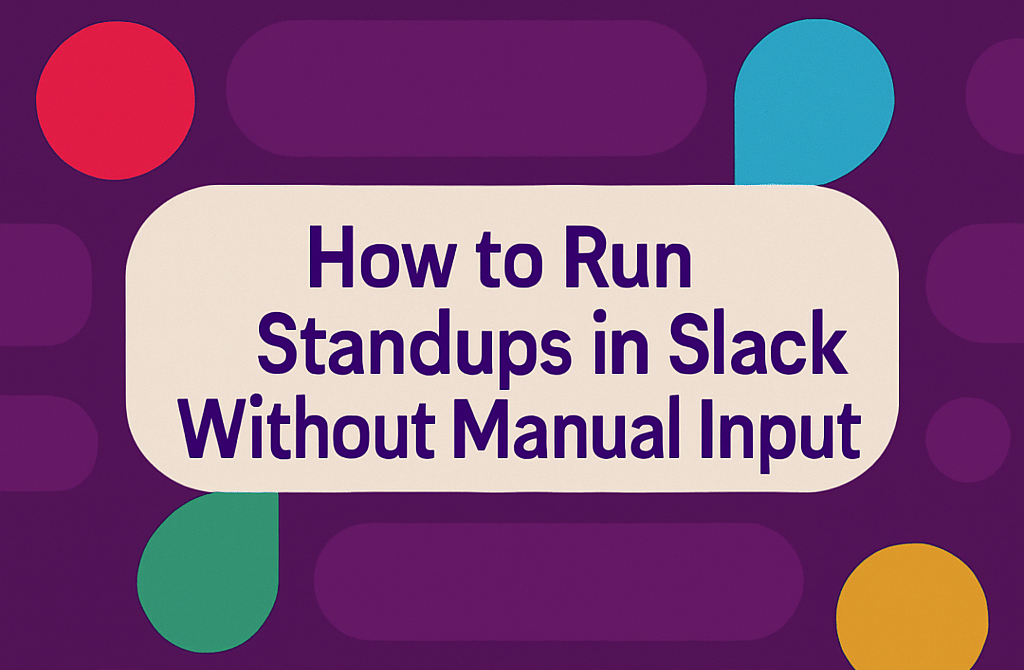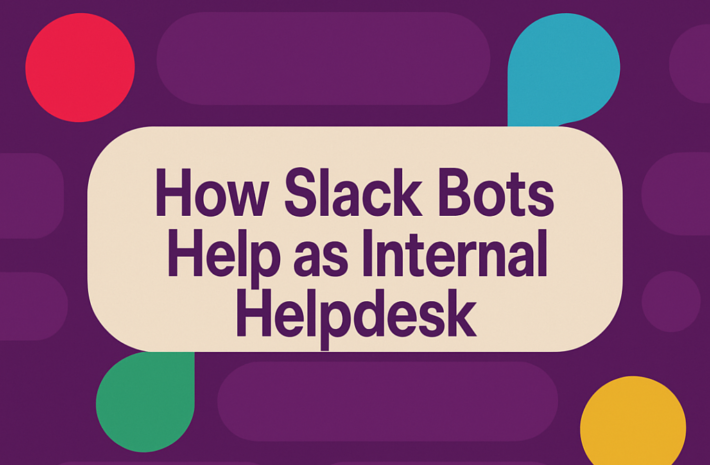How to Run Standups in Slack Without Manual Input

Daily stand-ups help keep teams connected, keep up-to-date, and discover problems early. However, if you do it by hand with Slack, it will be repeated and it often takes time. Manual management is even harder when teams grow or work in different time zones. This article explains how to perform automatic stand-up in Slack. Here’s why automation makes things more simple and how you can use tools like Hivemind to make this process better.
What Are Slack Standups?
Slack stand-up is a short daily check-in where each team member answers three simple questions:
- What did you do yesterday?
- What are you working on today?
- Are there any blockers or challenges?
These updates are usually done on shared Slack channels or direct messages. The purpose is to provide information to everyone and ensure that the team can move forward smoothly.
But doing this by hand every day is difficult and easy to forget, especially in a busy Slack workspace.
Why Manual Standups in Slack Aren’t Ideal
While Slack is a great place for team communication, running manual standups through it can be messy. Here’s why:
- People are distracted. Because messages are flying all day long, people tend to miss stand-up questions or forget to reply. This means that the update may not be shared.
- Confusion by time zone. When teams work in different parts of the world, it’s harder for everyone to find time to go online. It is always a few hours after someone replies.
- There is no clear record. Reply to stand-up may be buried in other messages. When someone tries to find what they said two days ago, it often becomes a long search.
- The manager spends extra time. Those who perform stand-ups must ask the same questions every day, urge people to be careful, and gather responses. In this case, time is scarce and time is taken away from other work.
Therefore, many teams use Slack bots to process this process automatically.
What Are Automated Standups?
Auto stand-up uses bots and Slack apps to ask stand-up questions on schedule. These tools collect answers from team members and share summaries with groups or managers.
With automation:
- No one needs to send questions manually.
- Everyone can answer at a convenient time.
- Bots keep a record of updates.
- Reports are easy to read and share.
This allows you to put your stand-up on track even if your team is working in different locations and times.
How to Set Up Automated Standups in Slack
Following the steps below, you can easily set up an automatic stand-up.
Step 1: Choose a Slack Standup Bot
There are several tools made for Slack stand-up. Here are some of the popular ones:
- DailyBot
- Standuply
- Geekbot
- Standup Alice
Each tool has different features, but they all help you check in every day. See Price, Features and Setup Simplicity. Most tools have free plans and trials so you can test them before you pay.
Step 2: Add the Bot to Slack
Once you have selected the tool, go to the Slack App Directory or the tool’s website and click “Add to Slack.” You may need to sign in and give the bots permission to access your Slack workspace.
After installation, the bots will explain how to set up.
Step 3: Set Your Schedule and Questions
You can select the following items:
- When to do stand-up.
- What to do on a day (e.g. Monday to Friday).
- Which question do you ask?
- Which team or channel will receive?
Most bots use three basic questions, but you can also add your own as needed.
Step 4: Let the Bot Run the Standups
Once everything is set, the bot will take over. Every day (or any day you choose), bots send questions to team members. Members reply directly in Slack and the bots collect answers.
Depending on your settings, you will receive a summary on the selected channel or direct message. Some bots send reports via email.
Benefits of Automating Slack Standups
There are many reasons why teams choose to automate their Slack standups.
Saves Time
No one needs to hit the same message every day or follow it late. Everything is executed on a determined schedule.
Keeps Things Organized
Stand-up answers are grouped and easy to read. Administrators do not need to scroll long chat threads.
Makes Remote Work Easier
Even if a team member is in a different time zone, they can respond at a convenient time, allowing the bot to keep everything on track.
Gives Clear Reports
Most tools even provide summary and participation statistics. This allows team leaders to understand who is contributing and what blockers are preventing people from working.
Meet Hivemind: Smarter AI Collaboration for Your Slack Team
If your team needs more than automatic stand-up, Hivemind brings something different. Hivemind is designed to help teams work smoothly with AI in Slack. With Hivemind, everyone can easily ask, share and solve questions in one place. It’s not just a stand-up tool; it’s a smart workspace that supports true teamwork. From chat to built-in prompts, Hivemind is designed to help teams get on track and save time.
What You Can Do With Hivemind
Run Collaborative Chats
With Hivemind, multiple people can talk to AI at once in the same chat. This means that team members can ask questions, get answers and share ideas together without switching between apps.
Pick the Best Model for the Task
During the chat, you can switch between AI models according to the task without starting a new conversation.
Use Chat Forking
If the conversation goes in a new direction, you can branch to another thread or private chat. By doing this, you can hold a side discussion while concentrating the main thread.
Get Better AI Responses
If the AI response is not targeted, you can click “Regenerate” to get a new response immediately.
Easy to Start
Hivemind is easy to install on Slack. Hivemind is easy to install on Slack, and once you add it, you can start using AI stand-up, group chat, prompt templates, and more. Hivemind is designed to suit your team’s needs, including faster updates, better collaboration, and reduced iterative tasks.
Tips for Running Better Automated Standups
Even if it is automated, it is helpful to have a few things in mind to make stand-up more useful.
- The question is clear. Use simple words and listen only to what you need. Do not burden the team with many questions.
- Set reasonable time. Choose the time the majority of the team is active or allow the bots to adjust the time zone.
- Follow up the blocker. When someone mentions a problem, let someone check in to solve it.
- Continue to check the status of participation. Once the reply is over, check whether you need to adjust the launch time and format.
- Combined with other tools. Use features like summary and task tracking tools to make the most of stand-up updates.
Final Thought
Running daily standups in Slack doesn’t have to mean repeating the same steps every morning or chasing after replies. By automating, teams can save time, stay organized and get the updates they need. With Slack bots, you can easily perform stand-up without manual input. Tools like DailyBot and Geekbot are great choices, but if you want something built for a more flexible and complete team collaboration, Hivemind offers more than automation. Hivemind helps improve teamwork, speed up problem solving, and reduce tool switching times.
Marketing Manager - Hivemind




